Splinterlands Ruleset Strategy Series - 24 - Little League
As a dude who grew up playing all kinds of sports, I fondly remember my little league days. We all thought we were all stars. We wanted the best equipment, the coolest uniforms and the freshest orange slices at halftime or between innings. Most of the time we didn't have a clue what we were doing. When I started tee ball I was 3. I'm told that instead of running to first base following my first hit, I ran to the outfield, but I have no recollection of that.
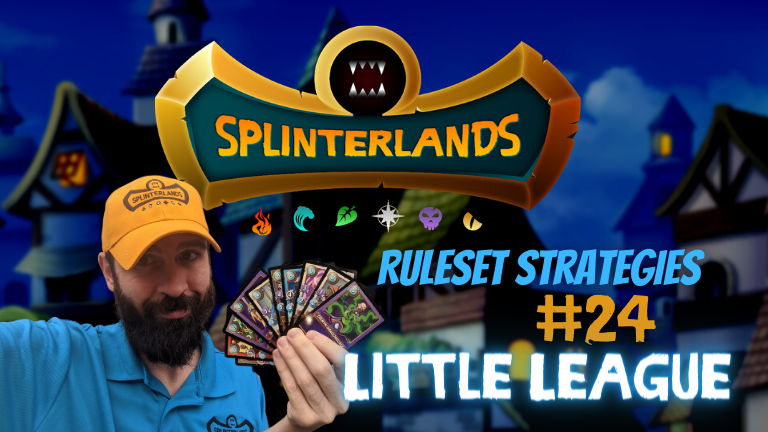
This strategy guide is about a different kind of little league, a Splinterlands ruleset with which we're all familiar. It's always been one of my favorites, and not just because it reminds me of those carefree days of summer sports and after school practices. This ruleset is an excellent strategic addition to any Splinterlander's repertoire. To win consistently in Little League is to be a skilled Splinterlands player.
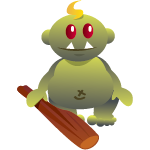
Little League
Ignore the Mana Cap
This may go against everything you've learned in the Splinterlands world, but the mana cap should be of no use to you in these battles. Think about it this way: Even if you use a 4 mana card in every position on your team, you'll only have a total of 28 mana (1 Summoner + 6 Monsters). A lot of times, you'll see a mana cap higher than 28 in a Little League battle, simply because the mana cap is still generated randomly, regardless of the rules in play. You'll even sometimes see a 99 mana battle with the Little League ruleset in play, in which case you'll say to yourself: What a waste!
The team building screen will automatically narrow everything down to only the cards that you're allowed to play in the Little League battle, which is very nice for simplicity's sake. Of course you'll have to watch the total mana if you have a mana cap in the teens, but in most cases you'll be able to play cards from the low mana auto selection as you see fit.

Let's Break it Down
The way that I think about drafting a team in this ruleset is Monsters fall into two main categories: 1: Monsters that cost 0,1,2 mana and 2: Monsters that cost 3,4 mana. If you're thinking there's a huge difference between 3 mana and 4 mana monsters, you're probably paying too close of attention to the mana cap and are heading for a mistake. I find myself using 3 mana monsters even more often than 4 mana ones in Little League battles. For example, I almost always go for the Sabre Shark over the 4 mana Water monsters like Spineback Turtle, Electric Eels and even Medusa.

Don't assume that you've wasted mana just because you have a team full of 3 mana Monsters and not as many 4s. When I look at all 3 mana Monsters next to all 4 mana Monsters, I see 1 equal level of power.
There are 40 total Monsters that cost 3 mana.
There are 38 total Monsters that cost 4 mana.
There are 37 total Monsters that cost 0, 1 or 2 mana.
That means... in Little League there are only 115 Monsters to choose from, and only if you have them all (which is unlikely).
Pick the most Important Abilities

You have probably noticed that lower mana cards generally have fewer abilities than high mana cards. In the Little League ruleset, you can't count on a card like the Warrior of Peace to give you a 3-in-1 debuff for all types of attack, so you'll need to decide which debuff is the most important to your strategy. Then you can choose a card that offers that debuff, but you should also make sure that it can hold its own in terms of attack power. Instead of the Warrior of Peace, I would consider the Light Elemental, with its perfectly decent Magic attack and the Range debuff of Headwinds.
Oftentimes with lower mana cards, the presence of Armor goes along with a lack of abilities. Keeping this in mind is important. I have found that abilities are generally more important in Little League, so I tend to go lighter on the Armor. Armor rarely makes the difference in a Little League battle, and once the match is complete, you'll probably notice that the Armor is still standing. It's better to carefully place abilities like Shield and Strengthen to allow your team to take more hits regardless of Armor.

Speaking very generally, the more abilities you're able to use in the Little League ruleset, the better off you'll be. I would also recommend avoiding the use of cards that have no abilities, like the Magi of the Forest.
Don't Waste Attacks
This is pretty simple, and it's always important in Splinterlands battling. But you should pay extra attention to this in Little League. Every Monster should be attacking from the position they are in. You cannot get away with double-tanking in this ruleset. Instead, I would recommend using a good tank followed by a strong Reach attacker (preferably with Poison like the Horny Toad). After that, position your Magic and Range attackers so that no Range attack ever ends up useless in the front row.
Protect your back row by using a defensive ability such as Thorns or Retaliate to ensure that even when attacked by a Sneaker, you're causing damage while receiving it. If you're not careful about the Sneak attacks, the enemy can easily destroy your whole team from back to front for a bitter defeat.
Some Cards I Like
Here are some of my favorite Little League cards with explanations of why I like to play them so much in this ruleset. As always, the most incredible thing about Splinterlands strategy is how many different solutions there can be to the same problems. So instead of assuming that I forgot something in this list, remember that these are just some cards I like to play. Your favorites may be completely different and I'm sure you have great reasons for playing them and winning with them. If you have some great suggestions, be sure to share them below in the comments so everyone who reads this strategy guide can benefit (unless you don't want to reveal your secrets) ;)

Cerberus
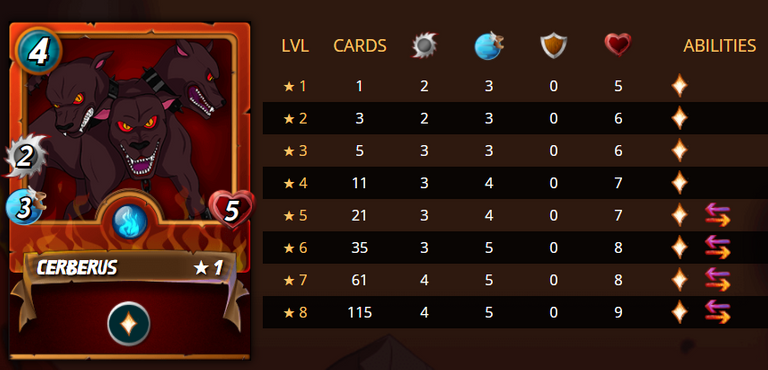
Cerberus is an easy choice when battling with the Fire Splinter in a Little League matchup. He's never quite good enough for tank in my regular Fire battles, but the Healing and Retaliate pairing with good Health make the three-headed beast an excellent leader in this particular ruleset. The main reason is that enemy monsters will not cause as much damage at a time, which allows Cerberus some precious time to heal himself. If you also have the Beetle Queen in play as a tank healer, it will be hard for them to get through your first line.
Crustacean King

It's the king for a reason. This old school healer always delivers with the awesome combination of Protect and Tank Heal. Even at Diamond and Champion, I play this card at level 8 because of the extra Health point, which I consider more important than an additional Range attack point. In Little League, the Crustacean King will always help you out.
Minotaur Warrior
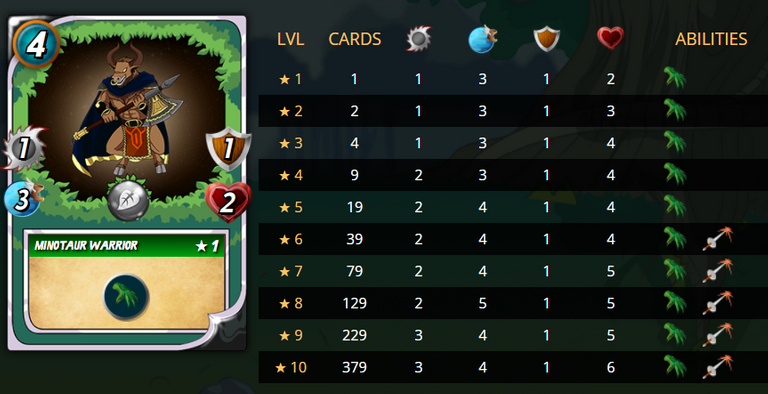
What makes the Minotaur Warrior the perfect Reach attacker for Little League is the fact that it has Piercing in addition to Reach. in Little League, you can always assume that the enemy's cards have lower Health than you would find in a regular battle. Sometimes all it takes is a good single Piercing shot to take out the tank. Plus there's a good chance that your tank will soften them up for the Minotaur, who has only slightly better than average Speed.
Crystal Werewolf
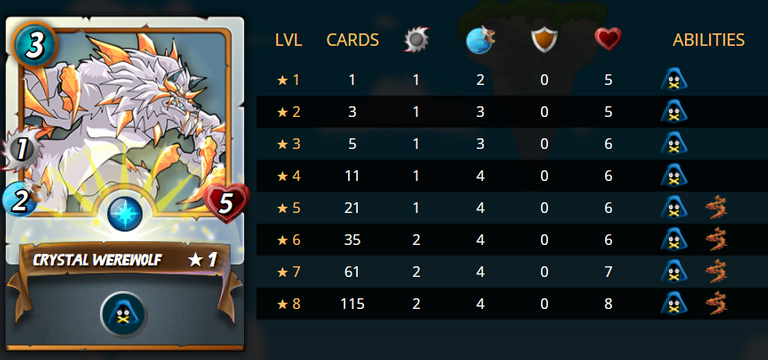
The Crystal Werewolf has a few good places to fit within a Little League battle, but my favorite is right in the back where it can take out the enemy's Melee sneakers. When the mana is limited to 4, chances are you won't be facing Magic Sneakers, so the Thorns of the Werewolf are usually enough to do the trick. Also, never underestimate the wolf's native ability of Silence, which becomes even more powerful in Little League, almost assuring that your enemy's Magic attacks will be reduced to 1.
Death Elemental
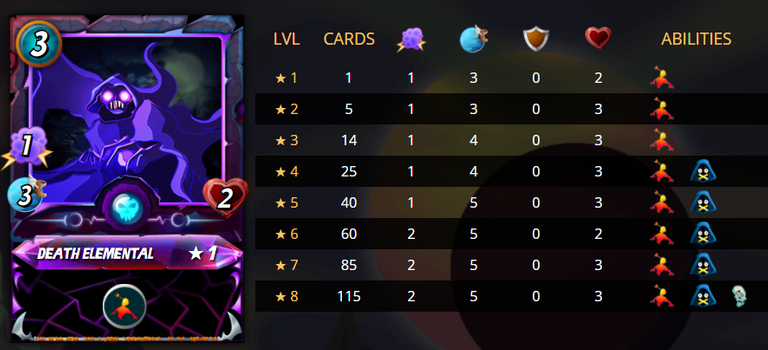
This card can be a little tricky to play effectively. It has low Health, leaving it immediately vulnerable, and its Speed is not incredible enough to always keep it alive for long. Still, the Silence ability will cause the enemy to waste the majority of their early Magic attacks, and if you play at max level, Weakness is absolutely amazing in Little League. A Magic attack of 2 is also nothing to scoff at.
Manticore
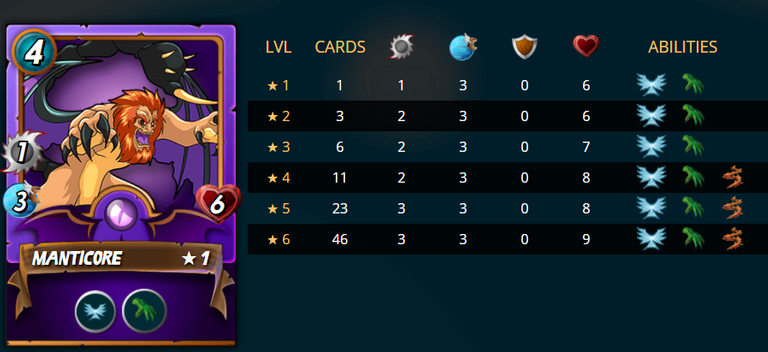
There aren't many Dragon Splinter cards that can be played in Little League, but among those that can, my favorite is the Manticore. It's especially effective in Earthquake/Little League, in which case I'll almost always reach for the Dragon Splinter (because my other favorite is the Fire Spitter). The Manticore is also average enough on the Speed that it can even be used in Reverse Speed effectively with no disadvantage. The Manticore will get a couple of attacks off before the death of your tank, after which its Thorns will cause some additional damage before it finally falls.
Elven Mystic

I like the Elven Mystic for the abilities it gains as it's leveled up. I wouldn't recommend using it at levels 1-3 when it's only a weak Magic attacker, but once it gains the Silence ability it becomes an asset to a team of any color. I especially love the icing on the cake ability that comes at level 8: Affliction. Affliction is not a sure thing, but if you can remove the enemy's cards' abilities to be healed in battle, they'll go down fast.
I hope this strategy guide has given you some helpful stuff to think about in the Little League ruleset. I always enjoy rulesets that limit your card selection, as they make you scoot to the edge of your seat and pull out your best strategies (if you want to win). Until next time...
See you on the battlefield!

List of Rulesets
Previous Editions of the RuleSet Strategy Series
- Back to Basics
- Healed Out
- Heavy Hitters
- Silenced Summoners
- Aim True
- Super Sneak
- Melee Mayhem
- Keep Your Distance
- Weak Magic
- Up Close and Personal
- Lost magic
- Unprotected
- Target Practice
- Fog of War
- Armored Up
- Earthquake
- Reverse Speed
- Close Range
- Broken Arrows
- Equalizer
- Lost Legendaries
- Taking Sides
- Rise of the Commons
Splinterlands on Twitter
Splinterlore on Twitter
Splinterlands on Publish0x
Spliterlands Discord Community
Splinterlands Telegram Community
Subscribe to the GOLD FOIL PRESS

Play Town Star (Free)
Blog for rewards on Publish0x
Collect Doctor Who NFT Trading Cards
Your content has been voted as a part of Encouragement program. Keep up the good work!
Use Ecency daily to boost your growth on platform!
Support Ecency
Vote for Proposal
Delegate HP and earn more